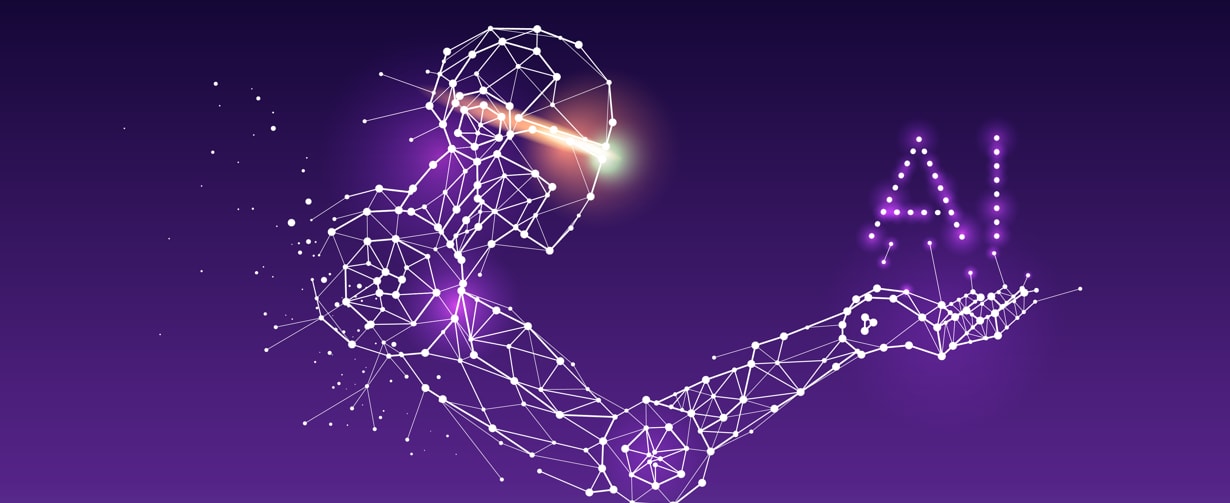
Sometimes it seems like every other website, app, or productivity tool is citing Artificial Intelligence (AI) as the secret ingredient in their recipe for success. What’s less common is an explanation of what AI is, why it’s so cool, and how companies are leveraging it to provide better user experiences. If you don’t know much about AI, the absence of an explanation can be confusing. If you’re inclined towards a fear of a computer-instigated apocalypse, it may even be scary. Artificial Intelligence is complicated, and it’s constantly evolving, but that doesn’t mean that it should be confusing or anxiety inducing — especially not when your personal information is involved.
Knowing how the tools you rely on work will help you to use them better, so here’s an introduction to AI.
AI Is Tech That Appears To Think Like You Do
AI at its most basic is any technology that is designed to operate in a way that mimics how humans operate (HackerEarth). The AI available today isn’t about perfectly replicating a human brain and putting it in a computer chip. Rather, the ‘human’ part is all about the output, or what the user interacts with directly. Forms of software that use AI strive to make the user experience as much like interacting with a human as possible — even to the point of the human learning curve.
Like humans, AI systems aren’t born perfect. They have to learn and adapt, and all of that is done just like how humans learn and adapt: by taking in information, or data, processing it, and storing it for future reference. It’s like when a young kid touches a hot stove. Their brain registers the pain and makes note to not do it again. AI isn’t much different.
Digging in deeper, AI itself is actually the largest and outermost circle in a series of four concentric circles. The next circle nested within AI is ML, or Machine Learning. ML is, unsurprisingly, the learning part of AI, but ML is itself reliant on the next circle within it, or Deep Learning (DL). But it doesn’t stop there, the fourth and innermost circle, and the one that every other circle is counting on, is the idea of Neural Networks (Intel).
Every part of AI is inspired by the human mind, but Neural Networks are the most clear and tangible application of that thinking. A functioning human brain is so impressive because it is made of lots of things that have simple jobs, but layers them together to make big things happen. The brain has billions of neurons that are linked together by trillions of synapses. The sheer scale of the operation makes it very difficult to replicate, but that’s exactly what scientists, mathematicians, and experts are trying to do through Neural Networks (Gizmodo).
This Is Just The Very Beginning For AI
Neural Networks are advancing, but they still have a long way to go, which affects every other piece of the AI puzzle. The advancement of Deep Learning and Machine Learning are dependent on the expansion and improvement of Neural Networks, and the pace of progress limits Artificial Intelligence. Right now, programs can appear to be human in the sense that they can learn to be more intuitive. For example, virtual AI assistants like Amy, built by x.ai, can help you book meetings and schedule appointments, Apple’s Siri can answer basic questions.
This is why the AI that we have right now is called “Weak AI”, or Artificial Narrow Intelligence (ANI). ANI is limited to a single task and is not self-aware. It can mimic the way humans think and communicate their ideas (Siri, for example, communicates verbally and through text), but it’s limited in its ability to actually think like a human.
ANI is already pretty great, but what experts are striving towards is the creation of Artificial General Intelligence (AGI), programs that will be able to reason, plan, and handle complex concepts, and then Artificial Super Intelligence (ASI), programs that are smarter than all of the collective minds on earth. AGI will be able to think at the scale and speed of one human brain, but ASI will be that times the human population of Earth — 7.3 billion. Both AGI and ASI will, theoretically at least, be creative, social, and able to learn beyond their programmed functions.
This is normally the part where some people get nervous. The idea of any technology possibly becoming smarter than it’s creator takes the story of Frankenstein to a new level, but it doesn’t have to be apocalyptic. As our tech progresses the way that humans live and work will change, which will open up opportunities for further innovation and advancement.
But We’re Not There Yet
The development of AI has already come a long way, but it still has a very long way to go until we have to worry about it surpassing the abilities of the human mind. We have a lot to learn about how our own brains work before we can build something that truly mimics them, but ANI is already in use all over the place. It’s in the anti-lock brakes on our car systems, powers Google, drives spam filters, powers autopilot, and is the key behind the music service Pandora and knowledge engine Wolfram Alpha. When you play scrabble against ‘the computer’, that’s ANI at work.
For more interesting knowledge , please follow TECHIEBUZZ!!
Comments
Post a Comment